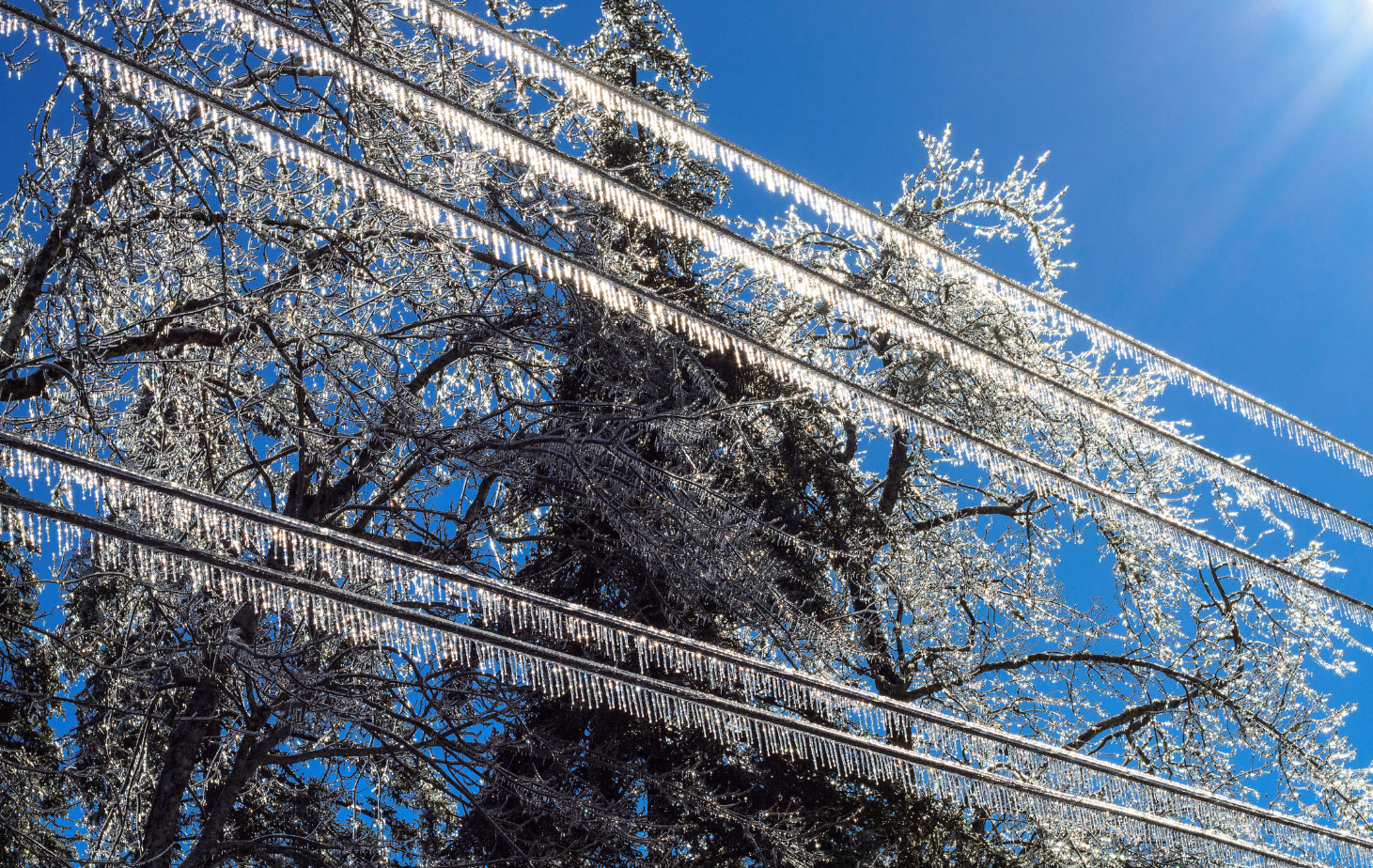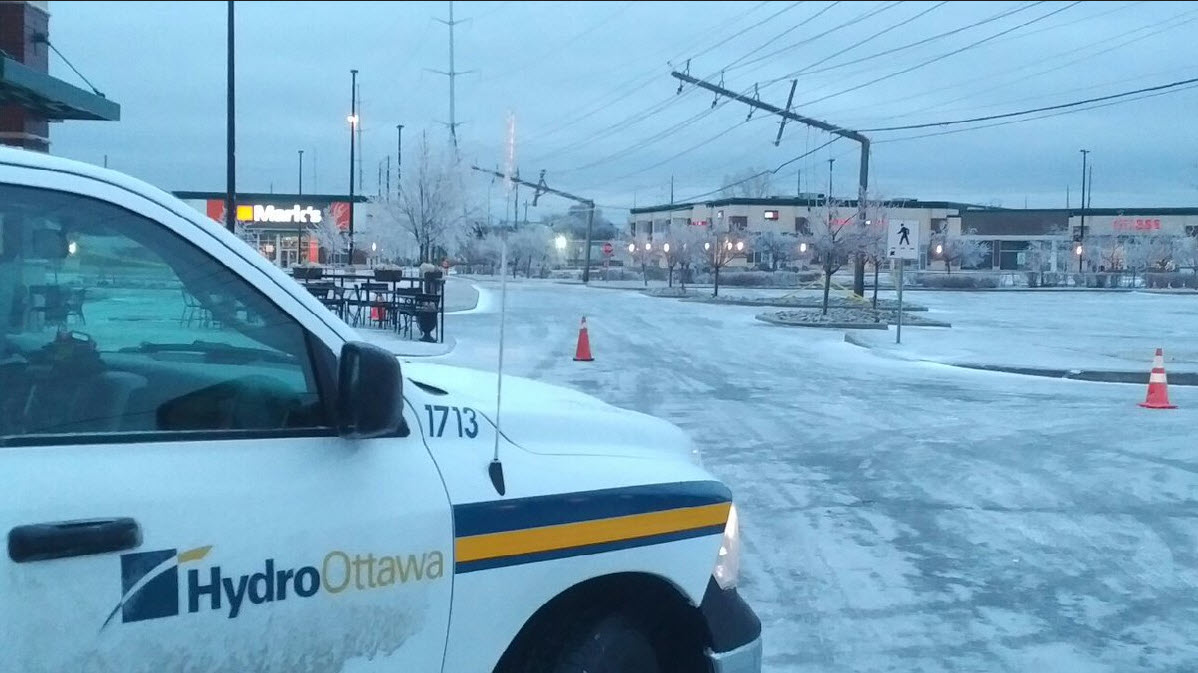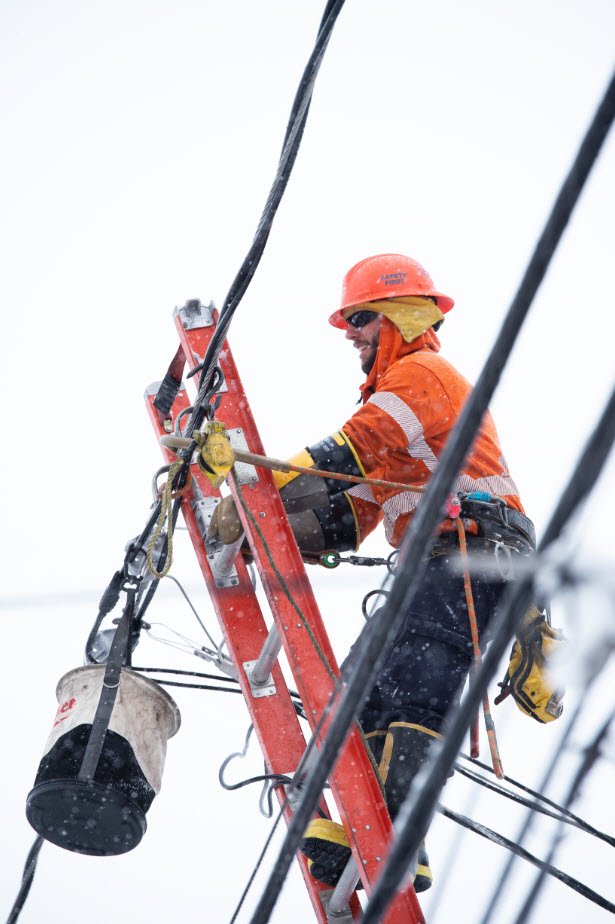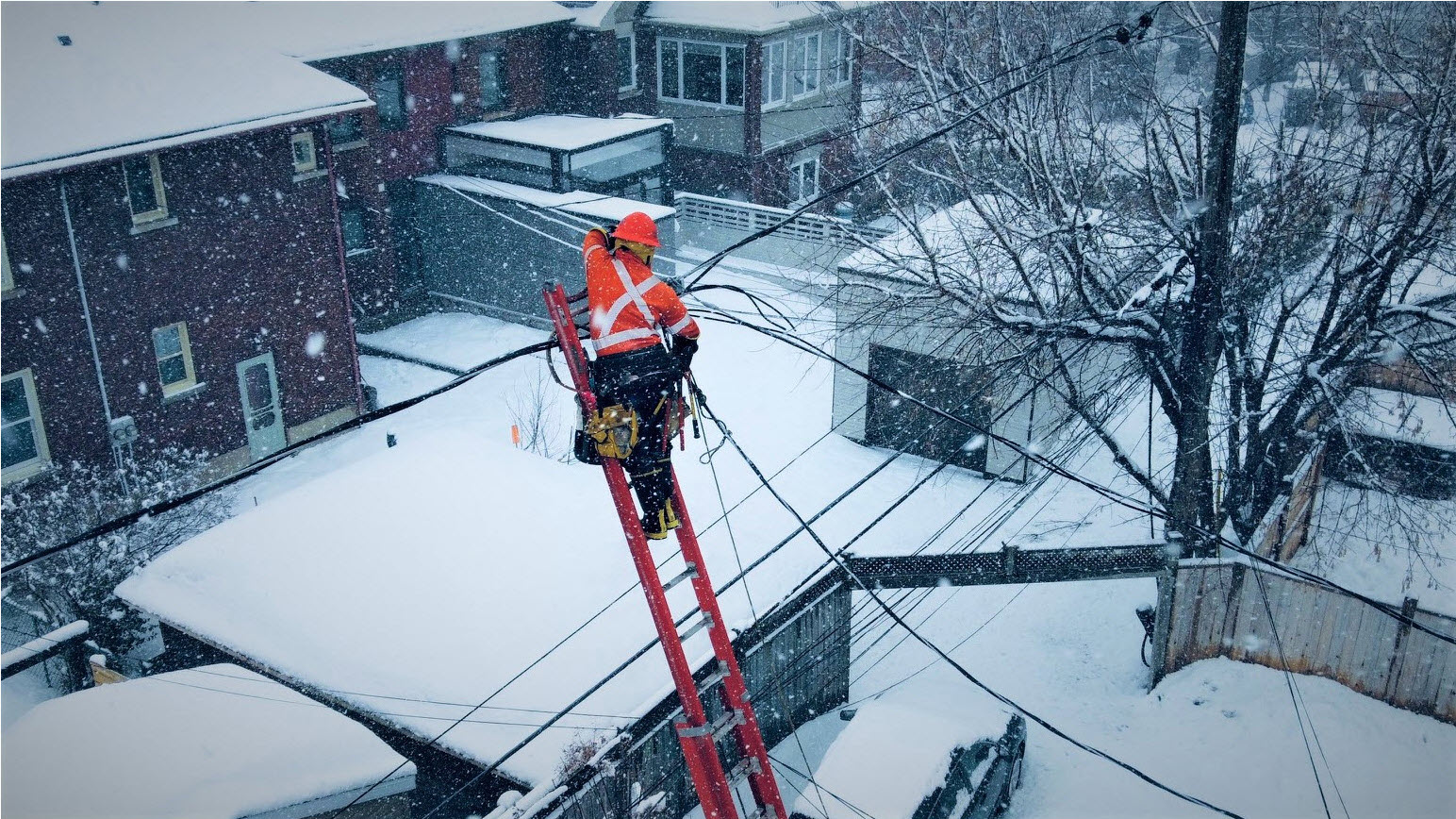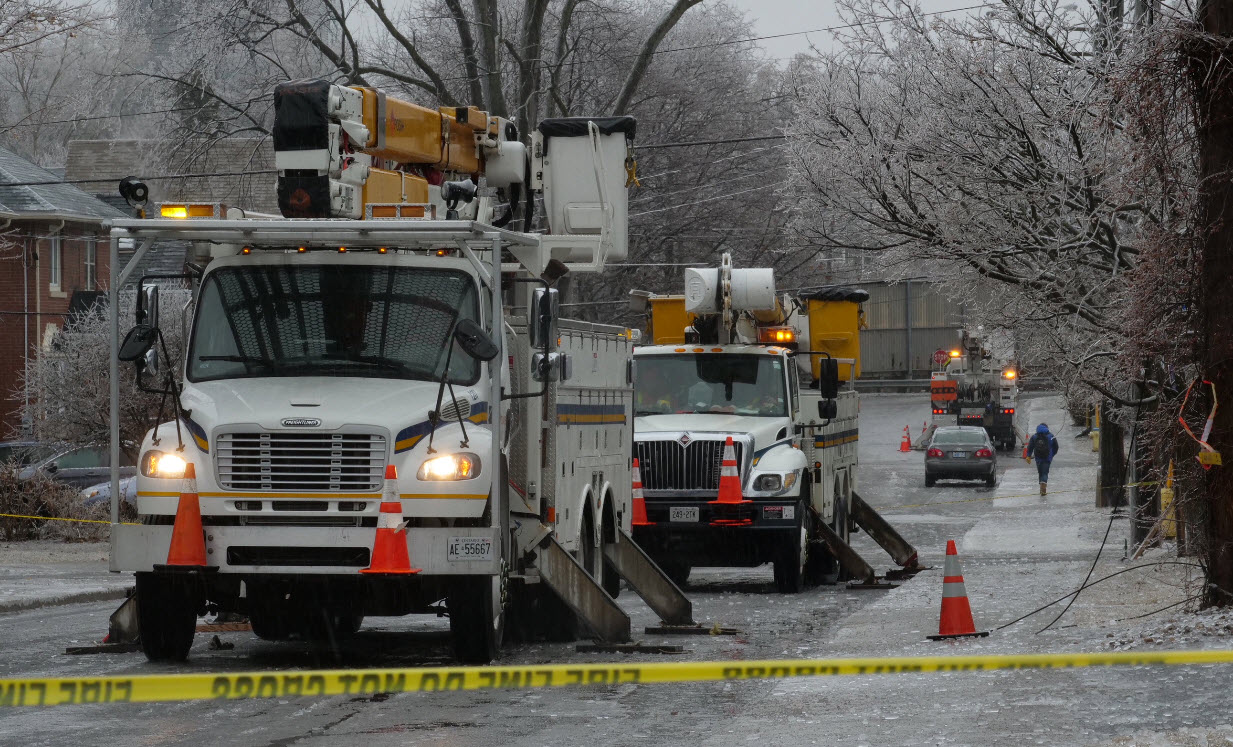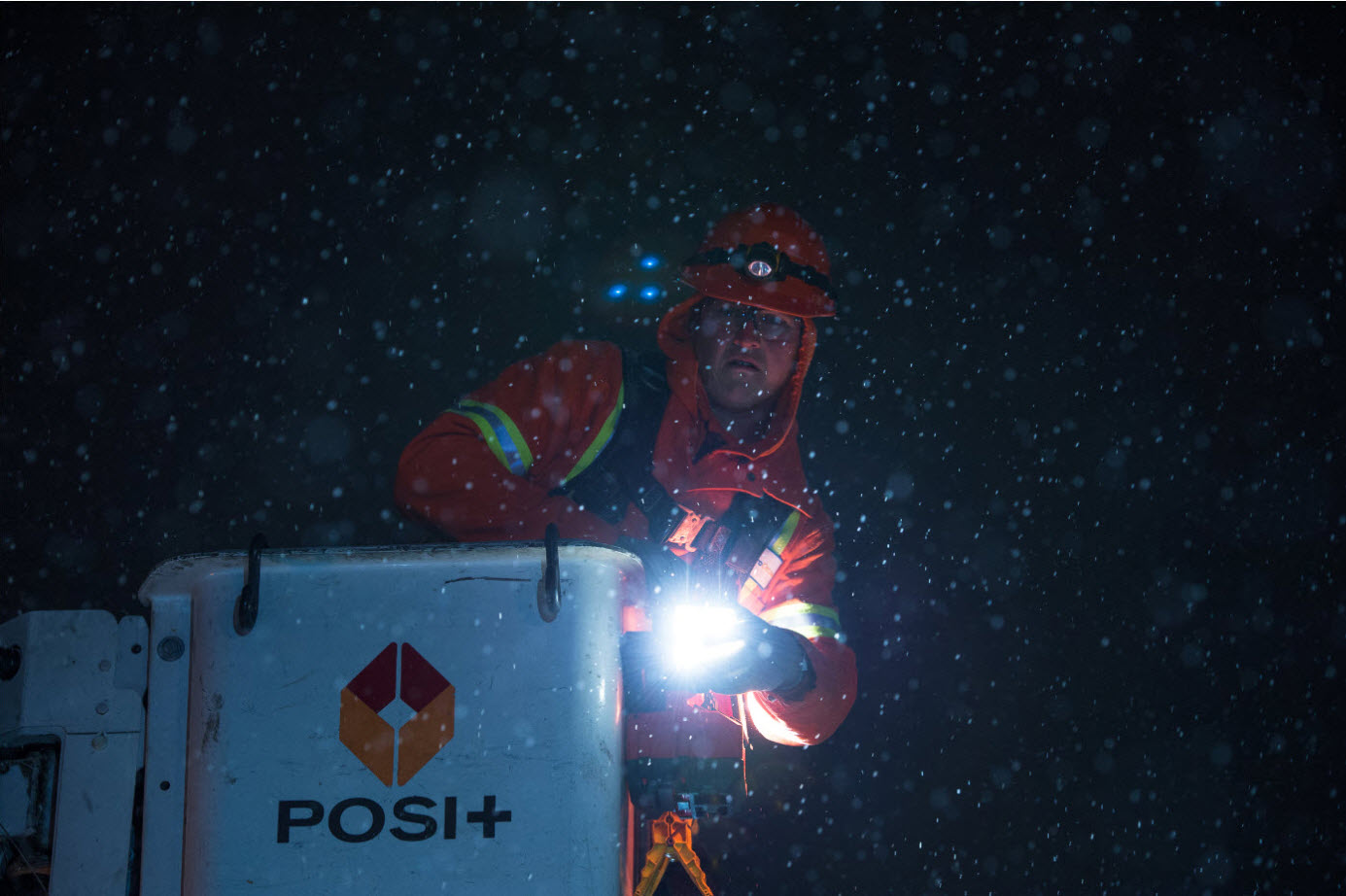With cold weather coming, powerful winter storms are on our radar. And with people continuing to work and spend more time at home, we understand that unplanned power interruptions can have a big impact on your life.
Winter presents its own unique set of dangers and challenges that can make outages more life-threatening, and hamper restoration efforts by our crews. This could include strong winds, heavy snow or freezing rain downing wires, trees and poles. Winter weather also makes roads treacherous to navigate due to poor visibility, slippery conditions and traffic lights not working.
Another major safety factor facing customers includes sub-zero temperatures during an outage, particularly overnight and for prolonged periods of time.
Here’s how our team handles a major winter outage, before, during and after one has occurred.
Before a power outage
Hydro Ottawa alerts its customers of pending winter storms and possible outages by keeping up with weather events minute-by-minute. If you follow us on Twitter, you’ve likely seen our weather warning messages, and how we plan ahead by keeping crews on standby and relocating resources, so if the power does go out, we can be ready to restore it as safely and as quickly as possible.
At Hydro Ottawa, system operators in our Control Centre are on duty 24/7, monitoring the grid and potentially threatening weather patterns to ensure the integrity and security of Ottawa’s distribution system. By being proactive, they can attempt to minimize the duration and impact of power outages using resources within their control (ice storms, tornadoes and derechos notwithstanding). Field operators are dedicated to emergency response, outage restoration and single customer calls, as needed. A complement of on-call staff, contractors and specialists, such as arborists, are available to support after hours should a situation arise.
During a power outage
After a major outage event has passed through our service territory, we need to investigate the extent of damage and evaluate the resources required before restoration can take place. Our electrical system is incredibly integrated and complex, and our ability to assess and come up with safe restoration plans takes time to ensure the safety of our crews and the public.
We prioritize repairs that pose serious safety hazards first, and restore power to critical infrastructure such as emergency services, hospitals, water and sewage treatment plants, schools and larger neighbourhoods of customers. We then systematically move on to repair lines that are serving the largest number of customers until we are repairing and restoring individual customers in our community.
While our crews work around the clock to address dangerous and life-threatening situations in order to restore power in cold temperatures, we provide as much information as possible to our customers, the media, the City of Ottawa, and the public-at-large. We are committed to communicating any information we have about outages and restoration as quickly as possible.
At Hydro Ottawa, our teams are on 24 hours a day, 365 days a year. We won’t go home until we’ve restored power to yours.
After a power outage
If there was a lot of damage to our system, our crews will continue to patrol the hardest hit areas of the city to look for potential or hidden issues, even after all power has been restored. Depending on the extent of the damage, this could take days, weeks, or sometimes months. The goal after every outage is to build back stronger and more resiliently.
Every outage presents an opportunity to learn, and will influence our future planning and storm hardening practices. Every time the power goes out, we keep a record of when and why it happened, how we resolved the outage and how long it took us to make the repairs. This information is used to identify trends for planning and prioritizing upgrades to our electricity infrastructure. It also informs our maintenance and tree trimming programs.
Based on key learnings from the extreme weather the capital has experienced these last six years, we have updated and modernized our emergency preparedness plans, and completed a Climate Vulnerability Risk Assessment plan. By studying the impact of climate change on our systems to date, we are better informed to identify infrastructure that is most at risk, and take action accordingly.
A good neighbour (near and far)
When disastrous power outages take place away from home, we’re there to help as well. As a proud member of the North Atlantic Mutual Assistance Group, Hydro Ottawa offers mutual aid to other utilities across the North Atlantic during times of crisis, lending skilled tradespeople and equipment on a not-for-profit basis. Our crews recently worked with restoration teams from Nova Scotia Power after Hurricane Fiona ripped through the province this past September.
Whether it's in our backyard or in a neighbouring city, we’re on when your lights aren’t. So the next time you find yourself unable to charge your phone, know that our teams are hard at work, even if you don’t see them on your street.
Hydro Ottawa relies on customer calls to help pinpoint the cause of an outage and ultimately shorten our response time and the duration of the outage. There are times when we are unaware of outages until helpful customers notify us.
You can report an outage two different ways. Submit a report online through MyAccount, or call our 24/7 outage line at 613-738-0188.
